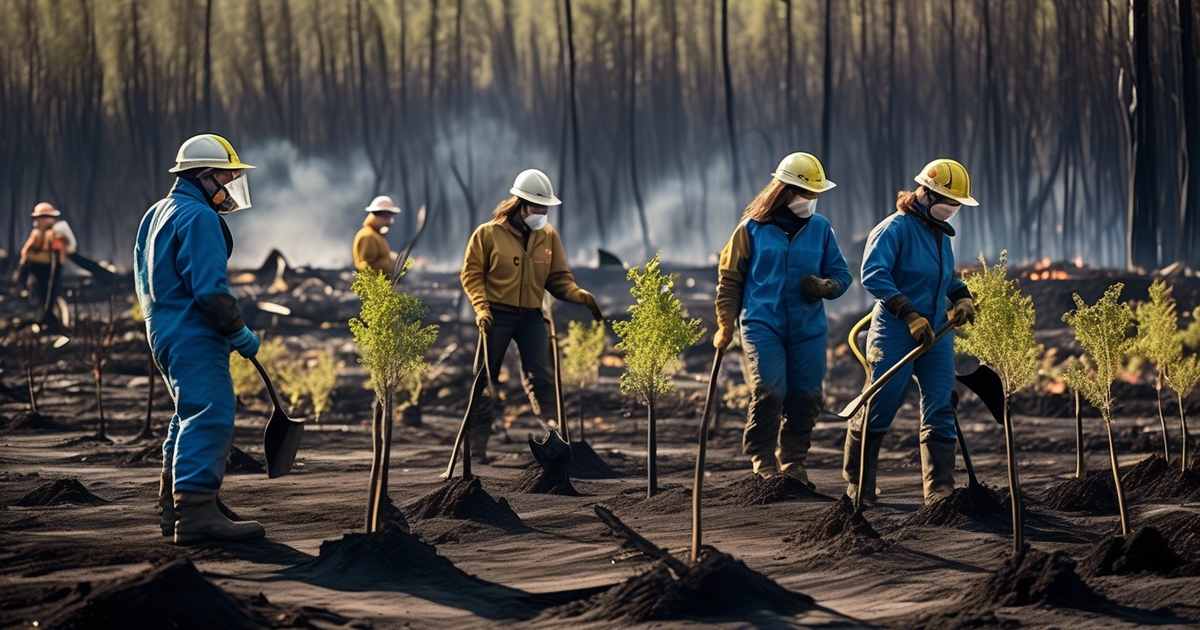After the historical wildfires and forest fires this year, reforestation has become a crucial investment for both large companies and small communities.
With billions of trees needing to be replanted, the question arises: how can we fund such a massive undertaking? This is where the concept of “no cost reforestation” comes into play.
Learn how companies, organizations, and individuals can support these initiatives through carbon credits, donations and partnerships. If you’re looking for information on how to help with reforestation efforts without incurring any costs, look no further.

The Cost of Reforestation
Reforestation projects aim to restore forested areas by planting new trees and nurturing their growth. However, these efforts require substantial funding to be successful. The cost of reforestation includes expenses for planting seedlings, maintaining trees, and monitoring their growth over time.Planting Seedlings: A Vital Step in Reforestation
One major expense in reforestation projects is the acquisition and planting of seedlings. These young trees are carefully selected based on their suitability for the specific environment they will be planted in. Planting seedlings requires significant labor and resources to ensure that they are properly established.Maintaining Trees: Ensuring Healthy Growth
Once the seedlings are planted, ongoing maintenance is necessary to ensure their healthy growth. This includes activities such as watering, mulching, pruning, and protecting the trees from pests or diseases. Regular care is essential to increase survival rates and promote strong tree development.Monitoring Growth: Tracking Progress Over Time
To gauge the success of reforestation efforts, continuous monitoring is crucial. This involves tracking the growth of newly planted trees over time to assess their survival rates and evaluate overall forest health.How No-Cost Reforestation Projects Operate
No-cost reforestation projects employ innovative strategies to restore and protect our forests without incurring any financial burden. These initiatives can leverage the concept of carbon credits, which are a way to offset the costs associated with reforestation efforts.Carbon Credits and Offsetting Reforestation Costs
“Carbon+ Credits are at their simplest a way to estimate how much one metric ton of carbon dioxide is worth once it has been removed from the atmosphere.” –according to TreefolksSo, how do companies use carbon credits to offset reforestation costs? It’s quite simple. CASE STUDY New Zealand: Forest owners participating in no-cost reforestation projects receive one carbon credit (known as NZU) for each ton of CO2 removed from the atmosphere by their trees. These carbon credits can then be sold or traded on an Emissions Trading Registry (ETR), allowing companies with an ETR account to generate revenue that covers the expenses associated with reforestation. The NZU can be bought and sold in the marketplace for funding a project.
The Future of Reforestation Efforts
It’s important to note that changes are underway in terms of how forestry is integrated into emissions trading systems. In 2023, an emissions trading scheme (ETS) reform specifically designed for the forestry sector will be implemented. This reform aims to enhance the effectiveness and efficiency of using carbon credits for reforestation projects.Major players in no-cost reforestation
Across the world, there are numerous initiatives that promote no-cost reforestation on a large scale. Here are two of the main players in this sector.Mast Reforestation: Revolutionizing Post-Wildfire Forest Restoration
Mast Reforestation offers a no-cost reforestation service to landowners whose acreage has been affected by wildfires. They provide a comprehensive process that includes mapping the burned acreage, creating a customized reforestation plan, planting, and monitoring to restore the land. Mast Reforestation covers 100% of the reforestation costs and generates revenue through the sale of carbon removal credits. Landowners can partner with them to restore their land and receive cash returns once the carbon credits are issued.Pachama: Harnessing Technology for Nature Restoration
Pachama is a leading technology-driven platform that focuses on carbon credits and nature restoration. Utilizing artificial intelligence (AI) algorithms and satellite data, Pachama supports climate action and biodiversity conservation.DIY No-Cost Reforestation
You don’t have to be a major actor in forestry or have carbon credits to get involved in no cost reforestation. You can participate toward forest health in many ways that cost no money at all.
